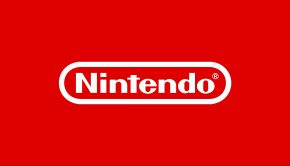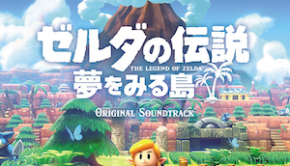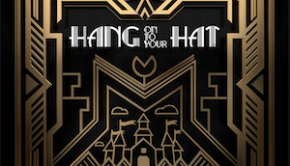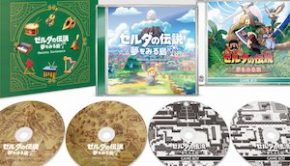The Legend of the Zelda -Symphony of the Goddesses-: San Diego, July 2012
Last year, to celebrate the 25th anniversary of one of the most beloved video game franchises to date, Nintendo launched The Legend of Zelda 25th Anniversary, culminating in the release of the latest entry in the series, The Legend of Zelda: Skyward Sword. However, for many, the greatest part of Nintendo’s yearlong celebration was The Legend of Zelda 25th Anniversary Symphony concerts that occurred in Tokyo, Los Angeles, and London. These concerts provided a once in a lifetime event for Zelda fans, and were also opportunities to hear many of Zelda’s famous tunes performed by a full orchestra — filling the venues with deep, rich, nostalgia filled melodies.
Among the highlights from last year’s concerts were the The Wind Waker and Twilight Princesssymphonic movements, the first two parts of a four movement symphony. Now, Nintendo in cooperation with Jason Michael Paul Productions, have delivered on their promise and completed the remaining movements. They will be presented, along with other returning material from The Legend of Zelda 25th Anniversary Symphony, in the The Legend of Zelda: Symphony of the Goddesses world tour. The end result is a near perfect video game music concert, incorporating music, visuals and nostalgia in an adventure not only of the world of Hyrule, but into the very timeline that connects the games together. It in many ways, the concert exemplifies the story of The Legend of Zelda, and presents it in such a way sure to move any gamer who has voyaged alongside Link and Zelda in any of the 16 games of the franchise.

I had the pleasure of attending a performance of the tour in San Diego on July 12. I arrived at the Embarcadero Marina Park, literally right behind the San Diego Convention Center, during Comic-Con, no less! Being there felt like something out of a dream, as I was surrounded by so many passionate fans dressed up as their favorite Zelda characters. Links, Zeldas, Sheiks, even the Postman from Twilight Princess (who later won a costume contest on stage!) teamed about, recollecting their favorite Zelda memories, and some even played their favorite melodies on their very own ocarinas. It definitely felt as if we had stepped into the land of Hyrule itself. The location almost seemed too perfect for the night’s festivities, as the park was a little green plain inlet peninsula overlooking the ocean, reflecting many of the locations from the series. GameStop had also set up several Wii consoles, and even hosted a small shooting contest from the rather obscure Link’s Crossbow Training game. Aside from these, there was a small merchandising booth selling Symphony of the Goddesses T-shirts and posters.
As much as I loved the venue, there were some problems with it overall. Although it was a very pretty location — having the city light up behind us as the concert began was truly a sight to see — there were major sound distractions given it was on the outside and right in front of the bay. At one point, a yacht that started blasting music from the sea, and a helicopter that came very close to our area. Luckily, these were very brief and only provided a slight nuisance from the overall experience. What’s more, the acoustics aren’t as good in an outdoors venue and a concert hall may have been better suited for a classical presentation of the series’ music.
Punctually at eight, we all sat down to enjoy the story of The Legend of Zelda, presented in both a visual and aural form. After the San Diego Symphony orchestra had finished tuning, conductress Eimear Noone, who had also conducted last year’s concerts, stepped onto the stage majestically, smiling as she prepared her role in the night’s festivities. Last year, she had done an amazing job — not only leading the orchestra on their musical journey, but also in introducing each theme for us. In a way, she seemed perfect in the role, almost becoming like Princess Zelda herself full of wisdom and reverence for the series. Our other guide for the night was none other than the producer of the Symphony of the Goddesses, Jeron Moore, who simply exuded happiness for the journey we were about to undertake, and surely knew his Zelda lore.
Finally as the audience settled down, we were introduced to our first piece of the night, “The Symphony of the Goddesses Overture”, which was actually the same medley that kicked off the anniversary concert at E3 last year. The piece introduced many of the themes we would hear that night, including the series’ Main Theme, Ganondorf’s Theme, Princess Zelda’s Theme, Twilight Princess‘ Hyrule Field, and Skyward Sword‘s Ballad of the Goddess. As Link jumped into the world of Hyrule, the audience too felt as if it had jumped straight into the legend, as the video screens reviewed several of the greatest moments in the series history, culminating with an epic clash in Skyward Sword. Unfortunately, although Skyward Sword features some of the best musical moments in the series history, this was its only mention in the concert, undoubtedly because of how recent the game is.
Some may argue that having large screens, presenting the very gameplay footage that we all grew up with, might detract from the actual music. However, I felt it was nice touch that truly brought an extra breath of life into the story. The way JMP Productions synched the music to the scenes was perfectly done. One general problem was that the series’ scenes contains much text to read. Of course, having the music dive deep into a variety of themes often meant that this text would only be on screen for a couple seconds, or would even be too tiny to read (especially the case during the Twilight Princess segments). At times also, the scenes would switch to show the orchestra playing, which definitely reminded the audience that this was a symphony concert, but would usually be done abrupty. In fact, if there’s any one single complaint about the overall presentation is that it goes by very quickly.

As the audience finished cheering, Jeron Moore came onstage to introduce the next few pieces. We ventured forth into a Dungeon Medley, which comprised the A Link to the Past‘s Light World Dungeon Theme, Link’s Awakening‘s Dungeon Theme, Zelda II‘s Temple Theme, and even the original Dungeon Theme from The Legend of Zelda. It struck me how cohesive a medley these four themes made up, and how brilliant their melodies were. Although this was definitely the most “gamey” sounding piece of the night, it worked brilliantly, especially as the music built up with the original Zelda scenes — including the iconic moment when the phrase “It’s dangerous to go alone. Take this!” was first uttered.
Next we were treated to the peaceful and charming Kakariko Village and Twilight Princess themes. This not only introduced some of the quirky elements of the Zelda universe (i.e. having chickens, or I should say Cuccos, attack Link vengefully on screen), but also gave some insight into how majestic Zelda’s music could be. The Twilight Princess Main Theme — usually done in full orchestral bombast — was transformed into a sweeping and touching orchestral piece. This segment was also a great way to introduce the audience to the orchestra, as they were shown live playing this wonderful music. Unfortunately, this piece was probably the weakest one of the night, not only being too short (clocking in at about two minutes), but also being a repeat from last year’s concert and the 25th Anniversary Symphony CD. Had it been incorporated into one of the movements, it might have worked a lot better.
The fourth piece of the night was entitled “Songs of the Hero ~Ocarina Melodies~”, which went through several of the most famous ocarina songs on different sections of the orchestra. Highlights included the Sun’s Song, Song of Time (sung brilliantly by the choir), Serenade of Water, Song of Healing, and lastly the ever so popular Song of Storms. The piece was built up much more dramatically than any others so far that night, giving it an adventurous feel that perfectly describes the many emotions while playing through a Zelda game. Having the full orchestra and choir play through these simple melodies, and expand on them majestically, is sure to delight any fan and it unquestionably did that night.
Much to our surprise, we had not yet truly begun the symphony “proper” at this point, as Moore came back on stage to announce that we would be proceeding into the main event: the four movement symphony dedicated to the story of Zelda. He then explained why the concert was named “Symphony of the Goddesses,” going into detail about how three goddesses, Din, the goddess of power, Nayru, the goddess of wisdom, and Farore, the goddess of courage, created Hyrule, and left their mark in the shape of the Triforce, three golden triangles representing these three virtues. Overall, in this reviewer’s humble opinion, it is a brilliant title, considering how cohesive the concert was at conveying the power, wisdom, and courage of the series.
Now, I must briefly pause here and explain one of the most interesting musical developments of theSymphony of the Goddesses, and just why the concert flows so cohesively. And I must also thank the main arranger, Chad Seiter, for bringing an amazing idea, and simply the whole concert, to life. The main theme, which is repeated throughout the concert, is of course the series’ main theme — introduced on The Legend of Zelda‘s overworld — which we all know and love so much. However, there is also a sub-motif found throughout that really nails the idea of the destined Triforce and how it connects or “links” the story of Zelda together. For anyone who owns The Legend of Zelda 25th Anniversary Symphony CD, if you listen to the first 20 seconds, you will hear this theme in a lushly and beautifully orchestrated. I am speaking none other than the obscure Triforce Room Theme from A Link to the Past, a short yet very sweet theme that appeared only at the end when Link finds the Triforce at the end of his quest. Here, though still short, it has been used and repeated to represent something larger: the destiny of Link, and his very story to save his homeland with the Triforce.
With that we can fully appreciate the movements, beginning with a prelude, The Creation of Hyrule from Ocarina of Time. The piece, sounding even more mysterious and awe-inspiring, gives the concert a new edge, especially in its use of minor keys. The story began, as the three goddesses descended into the chaos that would be known as Hyrule and started giving it shape. Halfway through the song, a beautiful solo violin rendition of the main Zelda theme appeared, recapturing the essence of the story we were embarking on. A small interlude with the aforementioned Triforce Room Theme entered the tender soundscape. As the Triforce was born on screen in spectacular fasion, so too did the orchestra crescendo mightily, and quickly and quietly died down, setting the stage for one of the greatest games of all time: the Ocarina of Time.
The first movement began in total chaos, as Link’s nightmarish first confrontation with Ganondorf erupted on screen. In a genius musical development, Zelda’s theme and Ganondorf’s theme, along with the Enter Ganondorf fanfare, were intertwined together, as Link is caught in the middle of the upcoming war against the dark lord. As Zelda escapes, and Link is somewhat beaten by a fleeing Ganondorf, the music died down and returned to the past, as we witnessed the Great Deku Tree’s final moments along with his short but dramatic theme. As the Tree withered away, the music faded out and into one of my personal favorite themes, the Ocarina of Time Title Theme. Hearing the song played live, with a soloist flute and piano combination, was something I had always dreamed about hearing live — it worked beautifully when watching Link and his steed, Epona, silently venture forth, just as in the original title screen. The song then built into a powerful version of the theme, as Link left his very best friend, Saria, from Kokiri forest. As she hands him the ocarina, the key element of the game, the Title Theme transformed wonderfully into a dramatic version of the Triforce Room Theme.
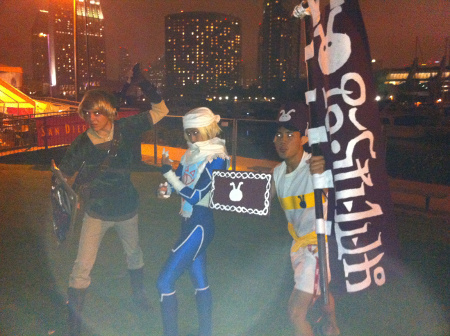
It was a beautiful and melancholic moment that soon changed into a fantastic and adventurous version of the Hyrule Field theme, as the screen was filled with all the memorable and evocative moments from Ocarina of Time. Quickly, the song changed into Saria’s Song, as Link playfully explores the Lost Woods. A melancholia then struck the song, as Link was reunited with his best friend, who would have a larger destiny to play in the story. As Saria accepts her fate, the music shifted to a slower version of the Zelda Main Theme, and finally the music softly echoed the Triforce Room theme yet again as the phrase “I’ll always be your friend…” appeared on screen. As the story approached its end, Link was reunited with the mysterious Shiek, as the character’s delicate theme played in the form of a piano and harp duet. In another brilliant melody intertwining, as Shiek’s true nature was revealed, Shiek’s theme continued to play, with Zelda’s Theme playing softly in the background.
However, as the calm subsided, a group of ominous notes began to play from horn and brass section. Princess Zelda was kidnapped, and Ganondorf was revealed. The Ganondorf Battle theme began to play, at a slower pace than in game, but more intense than ever before, while Link battled it out and returned the volley of energy that Ganondorf continually shot out. Growing in intensity as Link unleashed a Spin Attack, Ganondorf and his castle finally fall, and the music shifts to a mysterious yet ominous version of his theme. However, we weren’t quite done yet. Soon, the drums began to pound, and one of my all-time favorite final boss themes, The Last Battle, begins. Though short, it captured the full intensity of Link’s fateful battle against Ganon, as he teamed up with the sages and Princess Zelda herself to bring the evil demon king down, in an intense, almost desperate, battle. Finally after a dramatic, beautiful crescendo, which even contained notes from the series’ main theme, Ganon fell and the short Sage’s Seal theme played. As Navi departed, instead of being overwhelmed by a feeling of joy or accomplishment, we were met instead by a short ominous phrase and a certain mask floating on screen indicating that the night’s surprises had just begun. The Ocarina of Time Movement was a huge success, garnering much applause. It went through the storyline in an astounding form, and delivered much on all the emotional and resonant moments of the beloved game.
Jeron Moore returned on stage briefly and, in a humorous yet heartfelt moment, passed on a familiar baton to Eimear Noone, who began to play our next movement of the night: The Wind Waker. The movement began softly with the first part of The Legend of the Hero, the very introductory sequence from the game. As the violin reached for a dramatic moment, the scenery in front of us lit up as we were introduced both aurally and visually to the charming Outset Island. Link, now in a younger, cell-shaded form, accompanied by his younger sister, Aryll, explored the bits and pieces of the island that is familiar to any who have played the game. Briefly, the music teased the part of The Great Sea theme, but tragedy quickly befell our characters, as Aryll is kidnapped — the music reflecting the scene in a passionate, yet strangely endearing way. Soon, an uplifting fanfare came on, as Link left his little island with a band of pirates. The humorous, and slightly whimsical Pirates theme began playing, growing louder, and, dare I say, funnier, as Link approached and was literally catapulted into the Forsaken Fortress, resulting in much laughter from the audience. Aryll’s gentle theme played, as Link is briefly reunited with his sister. The music soon turned dark and dramatic, as Link was defeated and once again thrown out from a great distance.
The music then faded into the reveal one of the most impressive arrangements of The Legend of Zelda Main Theme, in the form of The Great Sea Theme. It is still impressive how by changing the chord progressions, composer Kenta Nagata was able to musically recreate the same seafaring emotion garnered by the accompanying scenes. Soon though, Link and the pirate Tetra, now revealed to be Princess Zelda, had their fates changed and aligned together, entering the final portion of the movement. Zelda’s Awakening, actually an arrangement of A Link to The Past‘s Title Screen, and a violin solo version of the series’ main theme, played once again demonstrating how cohesive Zelda’ music truly is. The Hero of the Winds theme, a spunky, yet somewhat forgettable, version of the Main Theme played, as Link was revealed to be the Hero of the Winds, and proceeded to gather his friends for another showdown with the demon king.
This led us to the fantastically arranged Ganondorf Battle. I am stunned at the velocity and just overall drama of this battle, something that only the orchestral version made me realize. It’s definitely one of the best final boss themes in the series. At last, with the help of Zelda, Link defeats Ganondorf and returns to the world above the waves, ushering in the Irish-inspired Wind Waker title theme, sounding as beautiful as ever before. Combined with both Aryll’s Theme and the series’ Main Theme, the second movement came to a close and concluded the first half of the Symphony of the Goddesses, drawing much applause and heartfelt cheers from the audience. The Wind Waker truly contains some of the best music in the series, and lends much flavor to the overall symphony, though it is marginally the weakest of the four movements, though that’s not saying much at all, they are all truly wonderful.
After the intermission, which was filled with numerous advertisements for the San Diego Symphony’s other performances — lending to a distracting pause — we returned to a music only entr’acte: “The Great Fairy’s Fountain”. This beautiful, tender piece is actually a slightly different arrangement to the one found in last year’s concert and subsequent CD, and I honestly can’t decide which one sounds better. In my opinion they both sound wonderful, especially in the different ways they use the orchestra. Last year, there was a focus on a harp duet, sounding graceful and simply lovely, while this year’s piece extends somewhat dramatically into the whole orchestra and choir. In either case, it is a great piece, and as Jeron Moore describes it, makes us all feel quite refreshed.
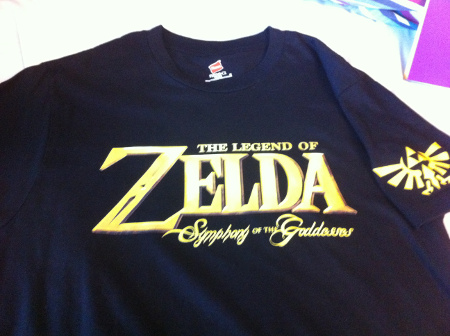
For the third movement of the night, we dove straight into perhaps the most dark score in the series:Twilight Princess. As an adult Link rode Epona through a sunset lit Hyrule Field, the beautifully mysterious Twilight Princess Introduction played, now fully engaging the choir, which had not been done in any of the movements prior to this one. The orchestra simply exploded in unison when Link is revealed to be a wolf, and the title came onscreen. Something interesting about the movement is that it doesn’t truly follow the story, at least not in the same vein that the Ocarina of Time and The Wind Waker movements did. Instead, it sticks true to the emotions presented in the game, touching on several montages. For instance, the music then segued into The Lament of the Spirit theme, presenting all four spirits from the game, at different points in time when they meet with Link.
The main star of the movement, just like in the game, was Midna, one of the best Zelda characters to date. Her minor key theme is still as delectable and strangely haunting and moving at the same time, as it was in the game, showing her amazing transition of character musically as well as visually. However, it wouldn’t take long until the orchestra erupted into the other main star of the movement, The Hyrule Field theme from Twilight Princess, presenting all the emotional moments of the song, as well highlighting some of the greatest moments in game, including the Hyrule Field battles, boss battles, and all the key characters from the game. The song is majestic and cinematic in a way that not even current day Hollywood soundtracks can even get close to hitting. The music raised to another bombastic crescendo as Link retrieved the Master Sword once again.
The music returned to its dark ominous and foreboding roots, as the Sages Theme began to play, focusing directly on the choir’s interaction with the bombastic highs and lows of the theme. Ganondorf had once again returned onscreen to cause more destruction, as the music reverted to The Dark Lord Final Battle Theme. This one plays out with a slower pace and stronger emphasis on finality and orchestral explosions than the other final battles, but it still worked out well. As Link readies for one final clash, the flute began to play loudly, charging in as we were pulled into the choral chaos from Ganondorf’s theme. But he was once again defeated as The Hyrule Field Main Theme came on in one last dramatic way. The orchestra then played one of the most emotional ending themes of the night. For anyone who has played Twilight Princess before, you know that there was a sense of triumph and yet a full sadness at the end of this fantastic title. The orchestra has once again captured these emotions in full force, as the choir cried out both the series’ main theme and Zelda’s Theme. And as to reflect the finality of this story, the final few blasts from both the horns and section and choir were a magnificent reprise of Midna’s theme. Absolutely beautiful. It moved me when they played this ending last year, and it still moves me to this very day.
And now we approached the ending to the concert, we were treated to the final movement and one game that still holds very near to my heart — the very first Zelda game I ever played, A Link to the Past. We began with full force, just as quickly as that game began, with the music from the Rain Scene, played with slight staccato notes, as Link makes his way into Hyrule Castle, leading us to a very gorgeous rendition of that very theme. With the choir going at full blast once again, the theme has never sounded better. Link finds his Uncle dead, and goes on to rescue Princess Zelda, leading her into the sanctuary. Some slight notes began to play as Link was tasked to begin his quest, which took me a second to realize they were actually foreshadowing the Dark World theme. The music faded along with the imagery, to reveal a cloudy sky, as Princess Zelda’s Lullaby was played wonderfully and fully complete.
As we’ve seen so far, each movement displayed some type of overall emotion, with Ocarina of Timerunning the gamut, The Wind Waker displaying whimsical joy, and Twilight Princess exemplifying the melancholia of the series. A Link to the Past thereafter feels like we are coming to a close, especially as both the Triforce Room theme and the Zelda Main Theme intertwined in a quiet, yet dramatic way. It transitioned into one of the oft forgotten themes of A Link to the Past, the Sanctuary theme, beautifully played by the choir. Link rushes to find Zelda used as the final sacrifice, leading to the chaotic, and brutal Boss Theme from the game, sounding almost like something from a horror movie, with the choir and percussion pounding away. The music died down quickly, paving the way for one of the greatest orchestral arrangements of the Zelda series. Revealed last year in The Legend of Zelda 25th Anniversary Medley, the orchestral softly built up to one sudden great rising fanfare: the Dark World theme. Link’s final adventure was at hand. An added section of music was added, as Link approaches the final battle of Ganon, and truly felt like the audience too was at the very end of the journey. The Final Battle Against Ganon was done in an interesting and fast paced way, focusing on a thundering percussion and choir. It sounded unlike anything we had heard so far, and as Link approached the final blow, the Legend of Zelda Main Theme blared up dramatically ending the fateful battle.
A female vocal solo came in, as we heard the Triforce Room Theme once again, finally in its rightful place, but this quickly faded out to reveal what I consider to be the most beautiful Zelda theme ever. There aren’t many words I can use to describe A Link to the Past’s Credits Theme. When I first played through the game, not knowing exactly on what I had embarked, I had no idea how the game literally used the concepts of power, wisdom, and courage, melded into the abilities you would gain in the game, the devious traps and puzzles you had to figure out, and the growth you as a player had to endure alongside Link. These are ideas and emotions that still persist in series. As I reached the end and heard this tune, I was instantly reminded of the journey I had gone through, the quest I had achieved. I felt sad seeing it over, but I felt like I accomplished something, and had grown and learned from the quest. Hearing this song performed live for choir and orchestra is something that I personally cannot describe in any way shape or form. I can only thank Koji Kondo and Chad Seiter for bringing such music and memories to the concert. As the song rose up in one final orchestral blast, so too did Link’s wish to restore the world and to become the true hero of Hyrule.
But as we know, the legend continues, and so does the music. The Legend of Zelda Main Theme played once again in the most fulfilling and incredible arrangement that I have ever heard, going through several variations as the choir and orchestra played and toyed with those infamous notes. Finally as we reached the crescendo of the song, the three goddesses of power, wisdom, and courage reappeared, alongside one final reprise of The Triforce Room Theme, intertwined with the main theme. With those final rising notes that any gamer should recognize, and the symbolic Triforce, floating onscreen, the story and the Symphony of the Goddesses came to a beautiful close.
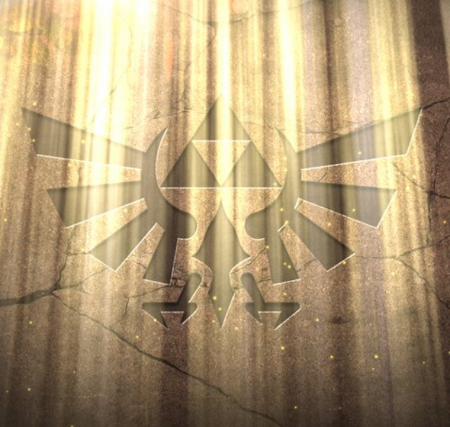
But… not quite. Jeron Moore quickly returned on stage to announce music from a small cartridge-based portable game. He was speaking of course, to none other than The Legend of Zelda: Link’s Awakening, and its mysterious and evocative theme, The Ballad of the Windfish. A fantastic theme, and one deserving a classical presentation such as this one, playing with no accompanying scenes, only the mysterious and beautiful music, as if it were something out of a dream… Moore returned once again to announce a second encore, one dedicated to all the girl gamers out there, due to a tribe of women who always got in the way for Link. Yes, Gerudo Valley was played, the same arrangement from last year’s concerts and CD. Scenes from the game were once again shown, almost dealing with the Gerudo Valley subplot like a different part of that story. Though the arrangement is impressive, I wouldn’t call it my favorite. It somewhat lacks the energy brought along with the flamenco guitars from the original. And finally, just when we thought we were all set and done, Moore came back one last time to introduce the final piece for the evening, one dedicated to all the fans of the series. Now, I won’t spoil the music it contained, but let’s just say this piece could easily be considered an addition to the overall symphony. Beautiful, melancholic, and covering one of the darkest, strangest stories of the Zelda universe, this final medley is really something special.
All in all, The Legend of Zelda: Symphony of the Goddesses is one of the greatest video game concerts ever conceived. It’s a fantastic, if not defining tribute to one of the greatest video game series ever. So many emotions were experienced, along with many laughs and even a few tears. The Legend will continue, and I couldn’t be happier with the direction the team is taking. There are still some more dates available, but hopefully, the JMP team will come back together next year and expand on several unexplored musical ideas that Zelda holds for us. This reviewer can’t wait to return back to Hyrule.
Do you agree with the review and score? Let us know in the comments below!
4.5
Posted on July 12, 2012 by Julius Acero. Last modified on March 1, 2014.

